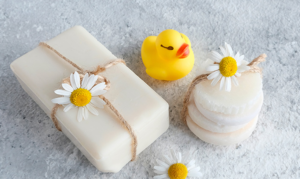|
Getting your Trinity Audio player ready...
|
The Basics of Handwashing
Before we embark on the soap safari, let’s revisit the basics of handwashing. Teaching your child proper handwashing techniques is the first line of defence against germs. Whether it’s after playtime, before meals, or after using the restroom, instilling the importance of clean hands is a lifelong lesson.
The Essentials: What Makes a Good Hand Soap?
Types of Hand Soaps for Kids
-
Foamy Fun: The Magic of Foaming Soaps
Foaming soaps are a hit among kids. The light, airy texture and the excitement of watching the foam grow make handwashing feel like playtime. These soaps often come in vibrant colors and fruity scents, turning a daily routine into a sensory experience.
-
Colourful Characters: Character-Based Soaps
Fragrance Matters: Finding the Right Scent
All About Antibacterial Soaps
The debate around antibacterial soaps continues, but for everyday use, plain soap and water are generally effective. Reserve antibacterial soaps for specific situations, such as when your child has been in contact with someone who is ill or in high-germ environments.
The Importance of Ingredients
-
Understanding Ingredients: A Quick Guide
Decode the ingredient list on hand soap labels. Look for gentle cleansers like glycerin or castile soap. Avoid harsh chemicals such as parabens, sulfates, and artificial colors. Natural ingredients like aloe vera or tea tree oil can provide additional skin benefits.
-
Hypoallergenic and Sensitive Skin Formulas
If your child has sensitive skin or allergies, opt for hypoallergenic formulas. These soaps are specifically designed to minimize the risk of irritation, making them a safe choice for kids with delicate skin.
Making Handwashing Fun: DIY Soap Dispenser Crafts
Transform the handwashing routine into a creative activity by crafting personalized soap dispensers with your child. Decorate plain dispensers with stickers, paint, or glitter to add a touch of your child’s personality to the bathroom.
Budget-Friendly Options: Quality Doesn’t Always Mean Costly
-
Store Brands vs. Specialty Brands: Decoding the Labels
Explore the world of store-brand hand soaps. Often, these are comparable in quality to speciality brands but come with a friendlier price tag. Compare labels to ensure you’re getting a product that meets your standards.
-
Buying in Bulk: Saving Pennies, Saving Hands
Conclusion
As you navigate the sea of hand soaps for your child, remember that finding the right one is a journey of trial and bubbles. Embrace the variety, involve your child in the decision-making process, and turn handwashing into a daily ritual that’s both effective and enjoyable.
You will find the following information useful:


